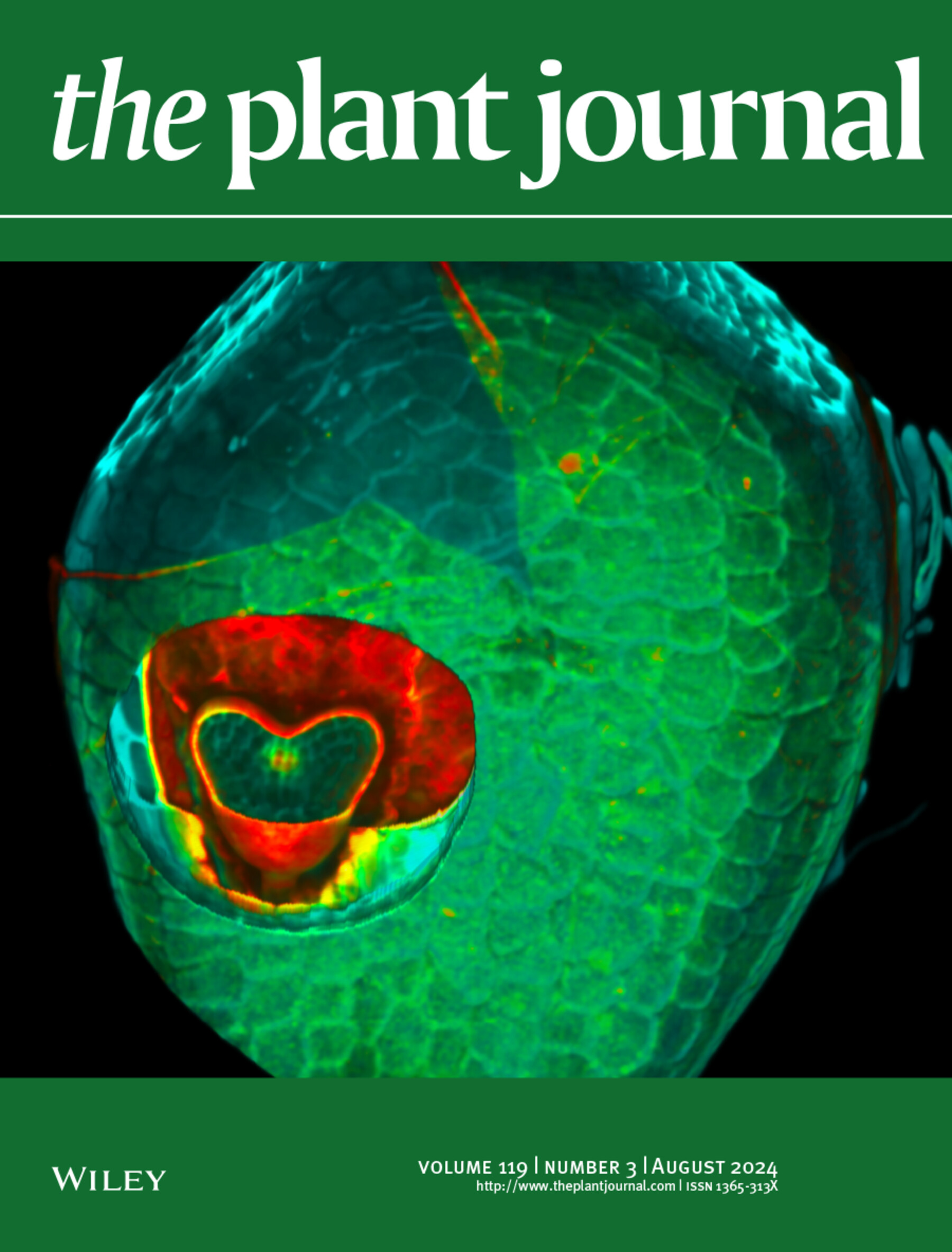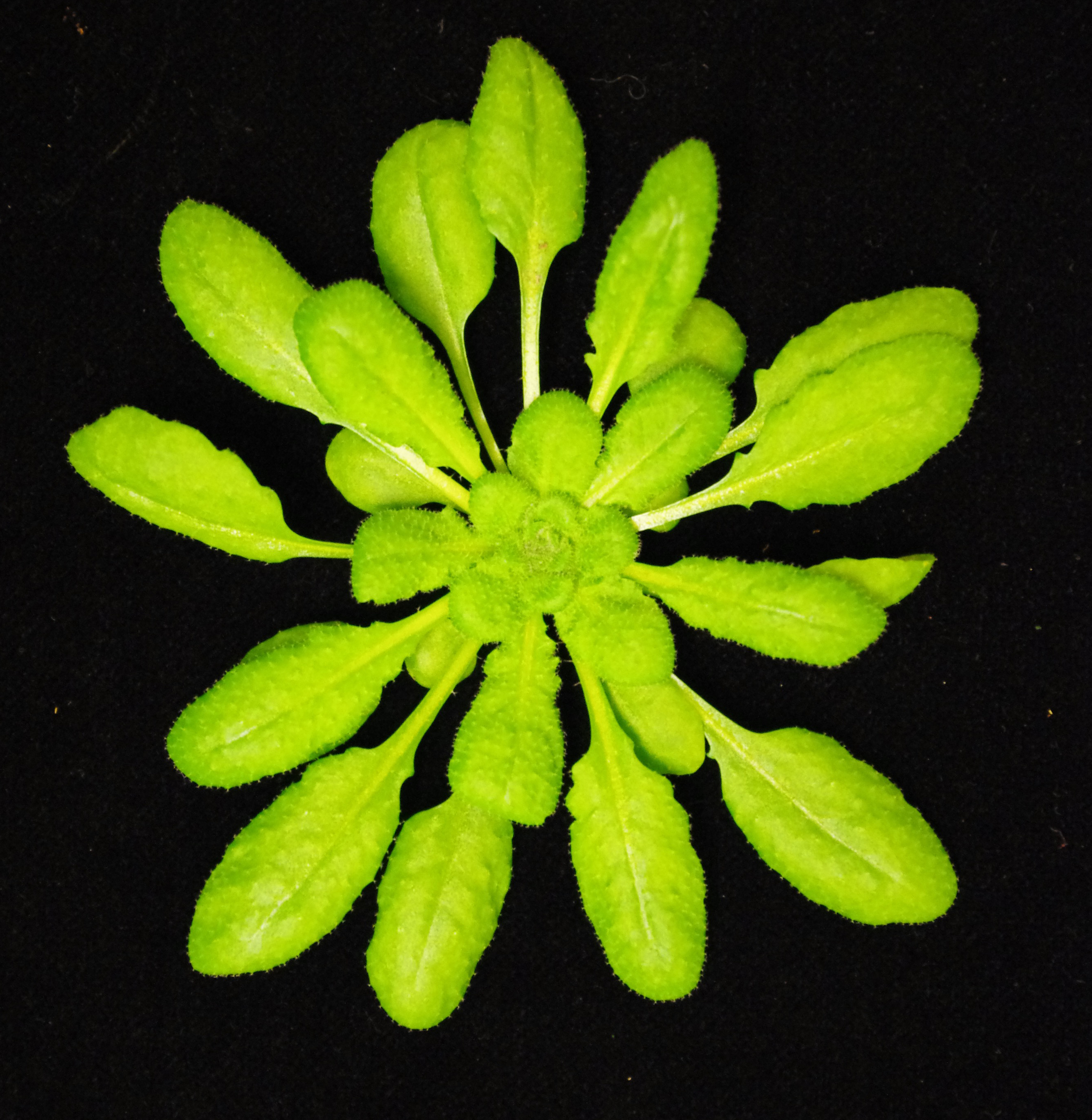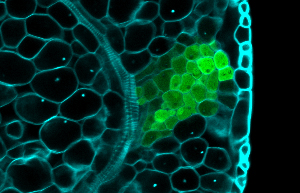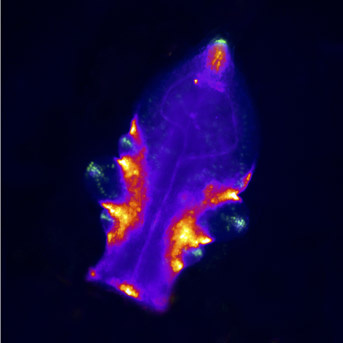The leaf as a model to understand how boundary domains control morphogenesis.
We developed quantitative tools and modelling approaches in order to reconstruct and predict leaf development. Very recently, we developped a new protocol for whole-mount mRNA in situ hybridization (Chelysheva et al., 2024)

As leaf shape is a plastic trait that can vary with environmental conditions, we believe this strategy will broaden the knowledge on plant development mechanisms and help to understand how plant adaptation and phenotypic plasticity are integrated to control leaf shape. This is particularly important in the context of climate change because agriculture will need novel varieties which responses to global warming can be predicted.

We developed quantitative tools and modelling approaches in order to reconstruct and predict leaf development. Very recently, we developped a new protocol for whole-mount mRNA in situ hybridization (Chelysheva et al., 2024)

As leaf shape is a plastic trait that can vary with environmental conditions, we believe this strategy will broaden the knowledge on plant development mechanisms and help to understand how plant adaptation and phenotypic plasticity are integrated to control leaf shape. This is particularly important in the context of climate change because agriculture will need novel varieties which responses to global warming can be predicted.

Expanding the known roles of organ boundaries during plant development.
For purpose of increasing plant performance, it is fundamental to understand whether developmental processes have been co-opted during plant evolution and domestication and whether they are conserved between species. Therefore, we explore the role of boundary domains in different developmental contexts and different species to widen our understanding of plant development.

For example, 2 projects focus on these aspects:
- Ovule primordia emerge from placental tissue and are separated by boundary domains. Alteration of these boundary domains has an impact on both ovule development and germ cell differentiation. The boundary domains of ovule primordia are key players in seed production (ANR LOVE_ME, AAP2024).
- While the role of boundary domains in the development of aerial organs is intensively studied, virtually nothing is known about their role in roots. A recent project aims to explore how these boundary domains contribute to root development (ANR IMOGEN, AAP2024).
Job offers coming soon !
For purpose of increasing plant performance, it is fundamental to understand whether developmental processes have been co-opted during plant evolution and domestication and whether they are conserved between species. Therefore, we explore the role of boundary domains in different developmental contexts and different species to widen our understanding of plant development.

For example, 2 projects focus on these aspects:
- Ovule primordia emerge from placental tissue and are separated by boundary domains. Alteration of these boundary domains has an impact on both ovule development and germ cell differentiation. The boundary domains of ovule primordia are key players in seed production (ANR LOVE_ME, AAP2024).
- While the role of boundary domains in the development of aerial organs is intensively studied, virtually nothing is known about their role in roots. A recent project aims to explore how these boundary domains contribute to root development (ANR IMOGEN, AAP2024).
Job offers coming soon !
Biological significance of boundary-controlled morphogenesis and translational research.
Patterns of hydathodes are closely linked with leaf shape. Indeed, these small water pores are often located at the tip of the serration in leaves. Hydathodes provide an entry point for various plant pathogens. We are studying their formation to provide a genetic and molecular dissection of hydathode differentiation.

- Brassicaceae produce dry fruits called siliques, whose seeds are dispersed by a dehiscence mechanism. We are studying how the transcription factors BOP and KNOX-BELL fit into the known framework of fruit patterning in order to assess their roles in dehiscence.
- Meristem conversion (i.e. the transformation of a root meristem into an shoot meristem) is both an excellent model for cell fate reprogramming and an important feature for explant regeneration and vegetative propagation. By studying the natural variability of meristematic conversion in Arabidopsis, we aim to better understand this process and possibly identify levers to improve its efficiency.
Patterns of hydathodes are closely linked with leaf shape. Indeed, these small water pores are often located at the tip of the serration in leaves. Hydathodes provide an entry point for various plant pathogens. We are studying their formation to provide a genetic and molecular dissection of hydathode differentiation.

- Brassicaceae produce dry fruits called siliques, whose seeds are dispersed by a dehiscence mechanism. We are studying how the transcription factors BOP and KNOX-BELL fit into the known framework of fruit patterning in order to assess their roles in dehiscence.
- Meristem conversion (i.e. the transformation of a root meristem into an shoot meristem) is both an excellent model for cell fate reprogramming and an important feature for explant regeneration and vegetative propagation. By studying the natural variability of meristematic conversion in Arabidopsis, we aim to better understand this process and possibly identify levers to improve its efficiency.

Leader:
Patrick Laufs